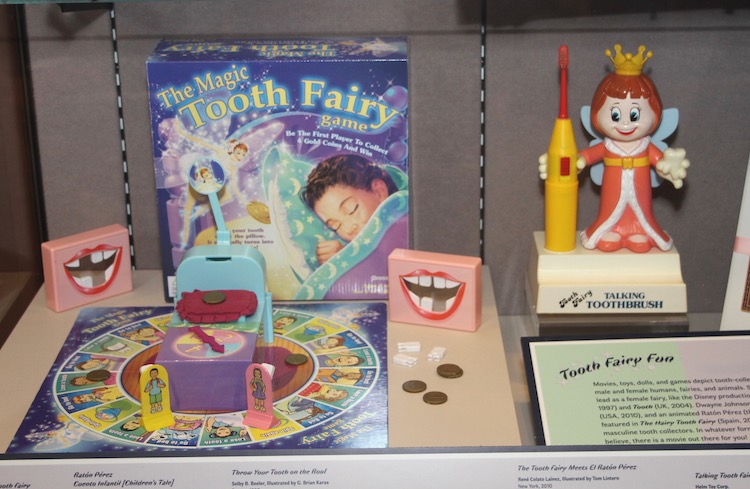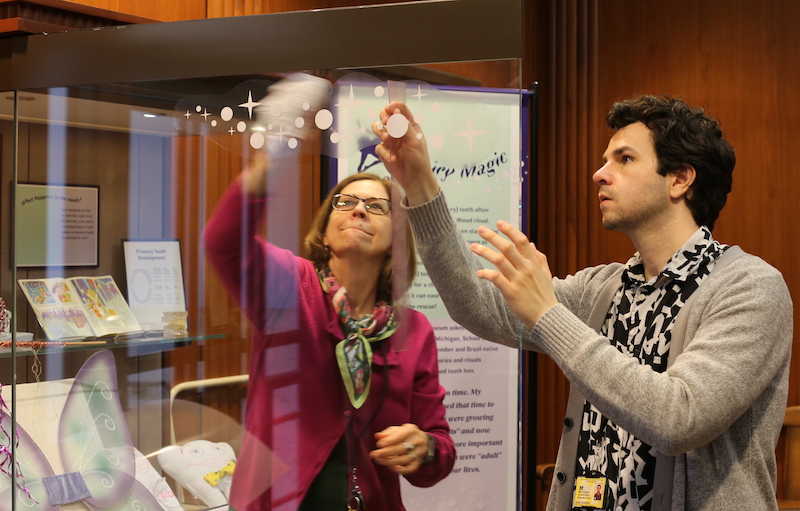New Sindecuse Museum exhibit looks at Tooth Fairy folklore3 min read
Ann Arbor, Mich., June 10, 2019 — When children in your family lose their baby teeth, does it prompt a visit from the Tooth Fairy? Or is it the Tooth Mouse who arrives to trade coins for the baby teeth?
The variety of legends surrounding the loss of baby teeth are explored in a new exhibit, “Tooth Fairy Magic,” at the Sindecuse Museum of Dentistry at the University of Michigan School of Dentistry.

The American version of the tradition usually features a diminutive, feminine winged fairy who replaces the baby teeth left under a pillow or on the nightstand with coins or dollars while the child is sleeping. The amount varies on the generosity of the fairy, not to be confused with the parents, of course. A recent Delta Dental poll said the average reward is $3.70 per tooth, according to the exhibit.
Families in some Spanish-speaking countries are familiar with a different creature, Ratoncito Pérez or el Ratón de los Dientes, a Tooth Mouse who visits at night while the child sleeps and exchanges a gift or coin for the tooth. Sometimes the baby teeth are thrown onto the roof of the house, or tossed over the head and shoulder while wishing for a strong new adult tooth to replace the baby tooth. In one ritual, European children leave their baby tooth in a class of water to later find a coin in its place.

These and other traditions are featured in the exhibit, along with Tooth Fairy toys, games and dolls that have been part of American culture in recent decades. The exhibit quotes School of Dentistry faculty member Elisabeta Karl, a native of Brazil, for her perspective on the Tooth Fairy tradition when she was a child and now with her children, which in the modern age involves texting the Tooth Fairy.
The new exhibit is in two display cases on the first floor of the Kellogg Building, just inside its west entrance. The Kellogg Building is on the west side of the School of Dentistry, 1011 N. University Ave. The exhibit is open during the school’s regular business hours, Monday through Friday from 8 a.m. to 6 p.m. There is no admission charge for the new display or for the rest of dentistry history exhibits in the Sindecuse Museum atrium. The museum’s current main exhibit is “Student Reflections: A Retrospective of Dental Education.” More information about the museum is available on its School of Dentistry website page.
###
The University of Michigan School of Dentistry is one of the nation’s leading dental schools engaged in oral health care education, research, patient care and community service. General dental care clinics and specialty clinics providing advanced treatment enable the school to offer dental services and programs to patients throughout Michigan. Classroom and clinic instruction prepare future dentists, dental specialists and dental hygienists for practice in private offices, hospitals, academia and public agencies. Research seeks to discover and apply new knowledge that can help patients worldwide. For more information about the School of Dentistry, visit us on the Web at: www.dent.umich.edu. Contact: Lynn Monson, associate director of communications, at [email protected], or (734) 615-1971.
